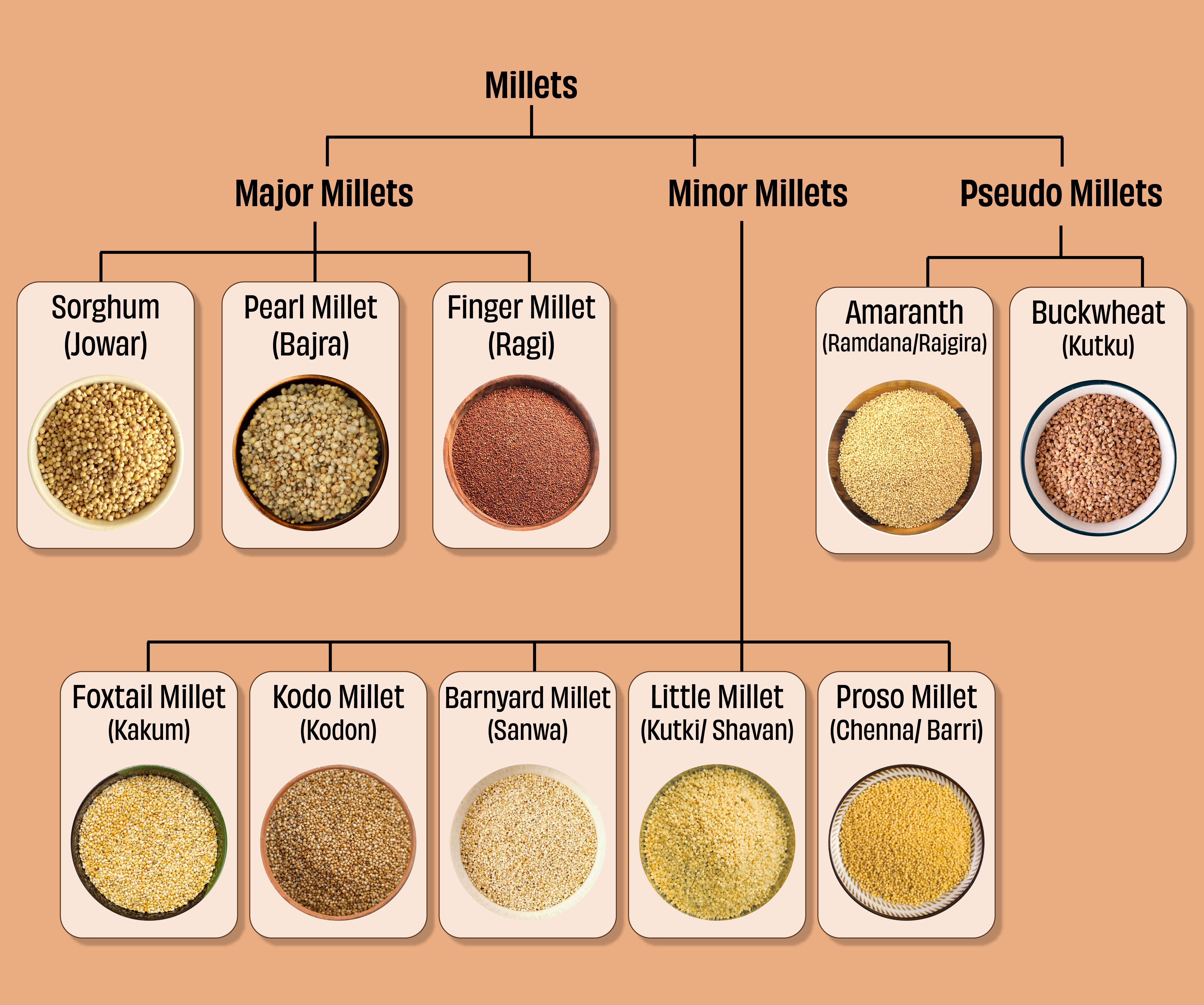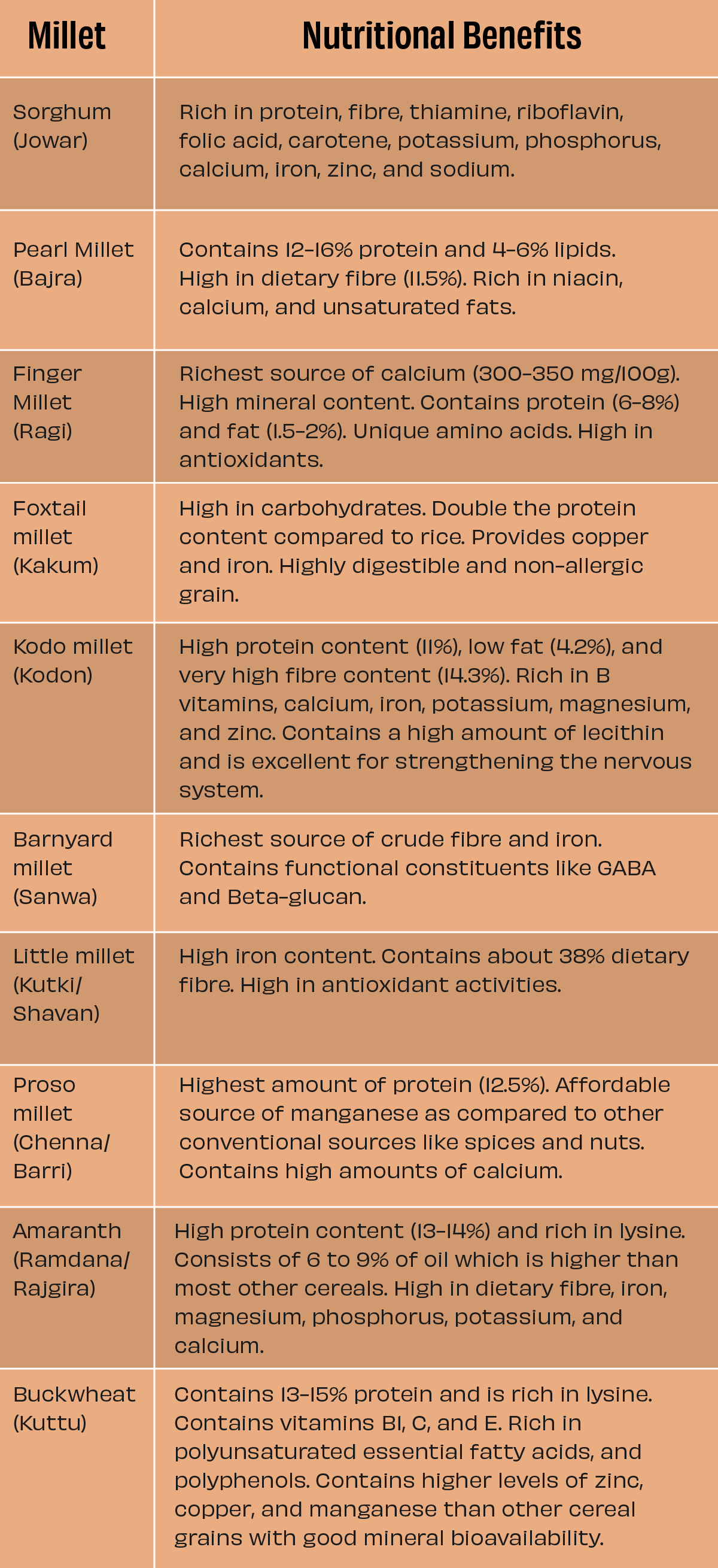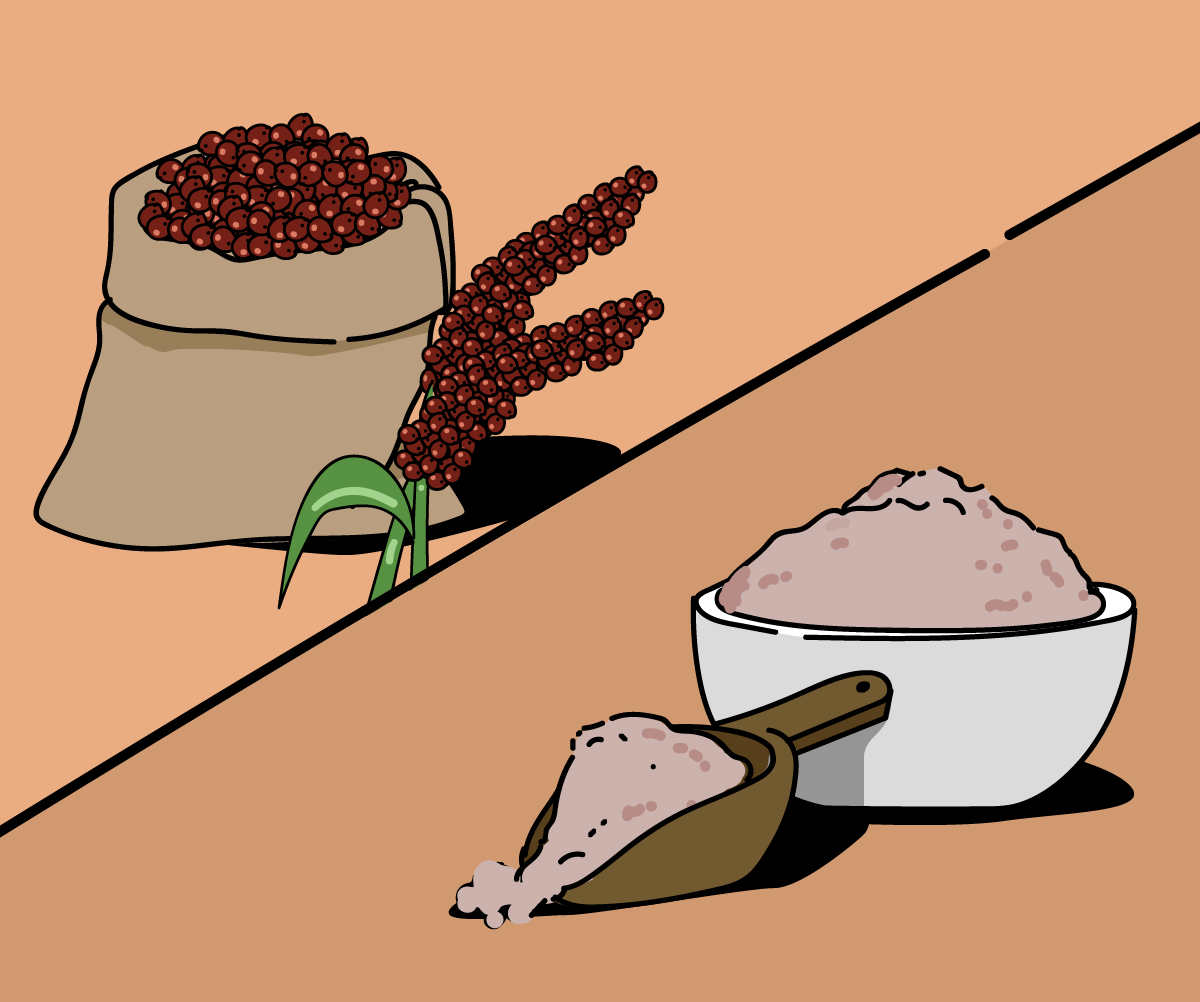A beginner’s guide to millets
A guide on what are millets, what are their benefits and how to eat millets
The most trustworthy source of food and
fitness journalism in the country.
Editor’s note: If you follow social media chatter, you may have come across millets. I certainly did. On my Instagram and LinkedIn. However, as is always the case with me when I encounter a new food thing, I didn’t know what to do with this information. So, I reached out to Shirin Mehrotra an independent food writer and researcher, to explore this topic for us. In this piece, she cuts through the noise, offering sharp insights and practical tips to help you navigate the real value of millets.
-Samarth
A couple of weeks ago, I was at INOX in Delhi to watch a film when I came across a standee promoting a millet-based menu at the cinema hall. “Meet the Millets”, it said.
The small menu included a risotto made with sorghum (jowar) and pearl millet (bajra), bajra tehri and finger millet (ragi) pudding—quite an anomaly in a space that usually functions on fast food. Through a hashtag (#IYM2023), the cinema hall made itself a part of one of the most popular food trends in the country this year: the millet mania!

Propelled by the Indian Government’s vision to meet global demand and promote nutrition, the United Nations has designated 2023 as the ‘Year of Millets’. So various establishments, such as cinema halls, restaurants, airlines, and even IRCTC, have revamped their menus to include millets, often known as nutri-cereals, due to their high nutrient content.
This is not the first time the National Capital has sent out waves of this food trend nationwide. In the 1990s, Prime Minister HD Deve Gowda declared ragi mudde – a Karnataka staple of ragi balls eaten with sambar – his favourite dish. The country quickly picked up the trend, and restaurants started serving the dish calling it the “Prime Minister’s Delight”.
Amidst the whirlwind of food trends, distinguishing between passing fads and sustainable, enduring practices that promote long-term health and well-being is often a challenge. So when it comes to millets, some questions inevitably arise: What exactly are millets, and why have they captured such widespread attention? How do they contribute to a healthy diet, and are the benefits real? How to incorporate them in our daily meals? Is it as complicated as it seems?
Let’s find out.
I. What are millets?
Millets belong to the broader grain family, which includes various harvested seeds of grasses like rice, wheat, oats, and corn. These grains, commonly known as cereals, have long been dietary staples in different cultures, providing around 48% of our total caloric intake.
Among the diverse array of grains, millets stand out. They are small-seeded grasses that held a significant place in the staple diets of certain cultures before the dominance of rice and wheat. What sets them apart is their ability to thrive in soil with marginal to low fertility, requiring fewer resources than wheat and paddy crops.
Millets can be categorised into two types: major and minor. This classification is based on the size of their grains. Additionally, there are pseudo millets, which, although not belonging to the Poaceae botanical family that encompasses “true” grains, offer similar nutritional benefits.

📩 May your reason for sharing this be major or minor, but never pseudo
II. The Millet Revival
Millets have a rich history in India, dating back to the pre-Harappan period. They were widely cultivated and consumed, with traditional millet recipes rooted in the eating traditions of Adivasi communities across different regions, like Gujarat’s handwo, dhokla, and rab, Odisha’s fermented ragi porridge, and Uttarakhand’s mandua roti and jhangora kheer.
So why did we stop eating them?
Multiple factors contributed: colonialism, urbanisation, agricultural development, and casteism.
During British colonial rule, agricultural priorities shifted towards crops that suited the import demands of the colonisers, such as spices, cotton, and indigo. Millets, being primarily consumed by the local population, received less attention and support. This trend continued into the 20th century, with no significant increase in production.
The Green Revolution in the 1960s further exacerbated the decline. The focus shifted to modernising agriculture through technology and high-yielding varieties, primarily targeting rice and wheat to address the prevailing hunger crisis. These efforts successfully increased rice and wheat production, but the traditional and indigenous millet varieties were left behind.
As urban palates became more accustomed to rice and wheat, there was a shift in mindset; in rural areas, people who consumed mota anaaj (thick, unrefined grains) were looked down upon. The farmers who grew the crop for sustenance stopped or reduced eating them. Urban food practices became aspirational.
This does not mean that the knowledge around cultivation, cooking and consumption of millets has been lost. It has just taken a back seat.
III. Why do we need to eat millets now?
With all the paparazzi around millets, it may come across as a food fad, but consuming millets has benefits — for human health, the planet, and agroecology.
One: Nutritional Powerhouses
Millets offer a range of nutritional benefits that are often lacking in our staple grains. Yes, they are rich sources of carbohydrates, fibre, and protein, but what sets them apart is that they are abundant in minerals, micronutrients, and phytochemicals. They provide vital nutrients like vitamin B, magnesium, antioxidants, and dietary minerals such as manganese, phosphorus, and iron.
“Most millets like jowar, kodo etc., when used right in a day-to-day diet, can help manage not just weight but even cholesterol and blood sugar levels. The addition of millets to the existing diet can also help in adding dietary diversity, thus making it great for the gut (millets are probiotic),” says gut and mental health dietitian Aditi Prabhu.

Source : FSSAI
Two: Gluten-Free Goodness
They are naturally gluten-free, making them an excellent choice for individuals with gluten intolerance or celiac disease.
Three: Environmentally Friendly
Beyond their nutritional benefits, millets play a crucial role in agroecology. They are drought-resistant and rely on rainwater, eliminating the need for intensive irrigation systems that strain already limited water resources. Moreover, they enrich the soil by replenishing its nutrients. Many small farmers cultivate the crop between major crop seasons, ensuring that their lands receive nourishment while providing sustenance for themselves.
Bottom line: Millets are no passing fad. Give’em a try!
🌍Share this with your environmentally conscious friends
IV. How to get started?
If you’re new to millets and find cooking ‘whole millets’ a bit intimidating (trust me, I understand), let me offer some tips with context.
Whole millets refer to unprocessed grains — they are a complete form of millets with all their natural nutrients intact. They may seem daunting, but they can be cooked like rice when properly soaked.
But there is an easier way to get started. Here is what I do:
1. Opt for flours: Many local and high-end brands offer millet flours. Mix these flours with your wheat flour to make roti, paratha, or bread.

2. Try dosas and crepes: Millet flours like nachni (finger millet) can be used to make delicious dosas or crepes.
3. Explore popped and puffed millets: Millets like bajra and jowar are available in popped and puffed forms, similar to rice. These make a great addition to your evening snacks or can be mixed with puffed rice to make bhel puri.
If you’re up for experimenting with whole grains — which are, by definition, more nutritious — here’s what you can do:
1. Cook them like rice: Soak them for a couple of hours and then cook them in a pressure cooker or an open pan with a 1:2 ratio of water to millet. Adding a bit of fat like butter or ghee while cooking can enhance the flavour.
2. With rice, curries, or salads: Enjoy cooked millets alongside rice or curries, or incorporate them into your salads by tossing them in olive oil, dressing, and chopped vegetables.
3. Prepare millet-based dishes: Whole millets can be used to make khichdi (mixed with dal), pulao, or risotto. Just remember to soak them for a couple of hours before cooking.
4. Make fermented dishes: Soak whole millets overnight, grind them into a paste, and use the batter to make idli, dosa, or dhokla. You can also ferment cooked whole millets and consume them as porridge mixed with dahi (yoghurt) the next day.
There are a few areas of caution to keep in mind when incorporating millets into your diet.
1. Start slowly: Since our urban palates and stomachs are not accustomed to millets, it’s important to introduce them gradually. You don’t need to completely replace rice and wheat unless your doctor or nutritionist advises.
2. Proper preparation and cooking: Millets contain compounds like goitrogens and oxalates, which can interfere with thyroid function and bind with minerals (to form kidney stones), respectively. Preparing, cooking, and consuming them properly is crucial to minimise these compounds’ impact. Thorough cooking reduces their presence.
3. Choose desi: Opt for desi (traditional) varieties rather than hybrid ones. Hybrid varieties, especially bajra, may have lower nutrient content. Look for millets with a shorter shelf life, as fumigation used to extend shelf life can lead to nutrient loss.
Whether it’s officially the “Year of Millets” or not, adding it to your everyday meals can bring numerous dietary benefits. Try them.
🍴Enhance your family’s diet by sharing this nutrient powerhouse
